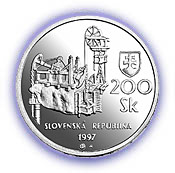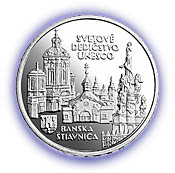-
NBS Tasks
Browse topics
- Monetary policy
- Financial market supervision
- Financial stability
- Banknotes and coins
- Payments
- Statistics
- Research
- Legislation
-
Publications
- Activity Report of the NBS Innovation Hub Annual Report Carbon Footprint Report of NBS Climate-related disclosures of NBS non-monetary policy portfolios Economic and Monetary Developments Financial Stability Report Investment Policy Statement of the National Bank of Slovakia Macroprudential Commentary
- Policy Briefs Report on the Activities of the Financial Market Supervision Unit Research Papers: Working and Occasional Papers (WP/OP) Statistical Bulletin Structural Challenges Other publications Sign up for your email notifications about publications
- About the Bank
- Media
- Frequently asked questions
-
For the public
Browse topics
- About the Bank
- Exchange rates and interest rates
- Banknotes and coins
- Payments
- Financial stability
- Financial market supervision
- Statistics
- Legislation
-
Publications
- Activity Report of the NBS Innovation Hub Annual Report Economic and Monetary Developments Financial Stability Report Macroprudential Commentary
- Report on the Activities of the Financial Market Supervision Unit Research Papers: Working and Occasional Papers (WP/OP) Statistical Bulletin Other publications Sign up for your email notifications about publications
- Frequently asked questions
- Media
- Careers
- Contact
UNESCO World Heritage – Banská Štiavnica and the Technical Monuments in its Vicinity
200 Sk commemorative silver coin


Banská Štiavnica, the oldest mining town in Slovakia, had acquired a dominant position in Europe at the beginning of the 13th century. In a document issued in 1275, it preserved the oldest known town-seal from the medieval Kingdom of Hungary. From the 13th to the 19th centuries, it was one of the most important centres for the extraction of gold and silver, and was at that time the most important centre of mining engineering and education. The most ingenious mine-water management system in the world with progressive mining, processing and water pumping technology was constructed in the area in the 18th century. It achieved world-wide importance due to its Mining Academy (1762-1919), which was founded by Queen Maria Theresia as the first of its kind in the world. In 1950, it was declared a historic town reserve because of its unique architectural monuments. In December 1993, Banská Štiavnica and the local technical monuments were added to the UNESCO World Heritage list.
-
Coin description
Obverse:
A beam-driven water pump, constructed by Jozef Karol Hell, and placed in the Siegliesberg shaft in 1738, is depicted on the obverse of the coin.
Reverse:
The main architectural features of the historic town reserve of Banská Štiavnica are depicted on the reverse. On the right is the Column of the Virgin Mary, in the centre the Calvary buildings and on the left the Church of the Assumption of the Virgin Mary. The shield of the town is shown in the lower left part of the coin.
-
Coin details
Designer: Milan Virčík Material: Ag 750, Cu 250 Weight: 20 g Diameter: 34 mm Edge: inscription: “PATRIMOINE MONDIAL – WORLD HERITAGE” Producer: Kremnica Mint (Slovak Republic) Issuing volume: 18,200
of which 1,700 in proof qualityDemonetized: 1,900 in brilliant uncirculated quality (2006)